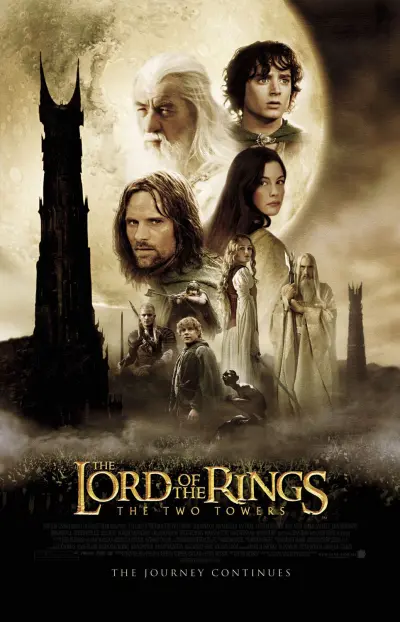
Let's dive into the enchanting world of Middle-earth in The Lord of the Rings: The Two Towers, the second installment in Peter Jackson's remarkable adaptation of J.R.R. Tolkien's influential work. Continuing the journey from where the first movie left off, this film delves even deeper into the quest of the fractured Fellowship as they strive to destroy the One Ring and thwart the apocalyptic intentions of the formidable dark lord Sauron. The narrative branches into three interweaving storylines, each filled with its own mixture of triumph, deceit, and turmoil.
As Frodo and Sam inch closer to the treacherous land of Mordor, their journey becomes even more precarious. Accompanied by the enigmatic and deceitful creature Gollum, they navigate the perils of the landscape. In this portion of the film, we witness a clever exploration of themes such as trust and corruption. Gollum, battling his dual personalities of Sméagol and Gollum, serves as a compelling character study. Through his struggles, we are offered a thought-provoking examination of how power can fracture even the strongest of minds. Gollum's presence becomes a testament to the Ring's corrosive influence, serving as a chilling metaphor for the addictiveness of power and the descent into darkness that can ensue.
Meanwhile, Aragorn, Legolas, and Gimli embark on a quest to rescue the kidnapped Merry and Pippin, which highlights the importance of friendship and loyalty. Their journey takes them across the plains of Rohan, where they encounter the resurrected Gandalf, now reborn as Gandalf the White. This part of the film emphasizes the narrative's investment in hope and redemption. Gandalf's transformation is not only a dazzling plot twist, but also a symbol of rejuvenation that infuses the trio, as well as the viewers, with the belief that darkness can always be overcome.
The plight of the kingdom of Rohan, threatened by the malevolence of Saruman and his orcish army, serves as the focal point of much of the film's action. The defense of Helm's Deep, a monumental cinematic set-piece, is more than just a clash of weapons; it represents a battle for survival, symbolizing the indomitable spirit of humanity against overwhelming evil. King Théoden's rise from the depths of despair to a formidable leader embodies the theme of restoration and the reclamation of lost glory.
The Two Towers also delves into the theme of industrialization versus the natural world. Saruman's destruction of the Fangorn Forest to fuel his war machinery stands in stark contrast to the ancient and lush harmony of the Ents, the tree shepherds who rise up against him. This subplot serves as a poignant reminder of Tolkien's concerns about the loss of nature in the face of unchecked technological progress, a message that resonates deeply, particularly in today's era of environmental crises.
The intertwined destinies of the multitude of characters against the backdrop of a continuously expanding world make The Two Towers a tapestry of rich storytelling. It is not merely the heart-pounding treks and awe-inspiring battles that captivate the audience, but also the more understated moments of growth, courage, and introspection that these characters experience. As the film reaches its conclusion and the struggle for Middle-earth reaches its climax, what lingers are the enduring themes of sacrifice, unity, and the unwavering pursuit of a fragile yet resilient peace. Through its intricate storytelling and thoughtfully crafted scenarios, the movie becomes a profound meditation on the complexities of good and evil, the weight of choices, and the enduring light of hope that persists even in the darkest of times.

